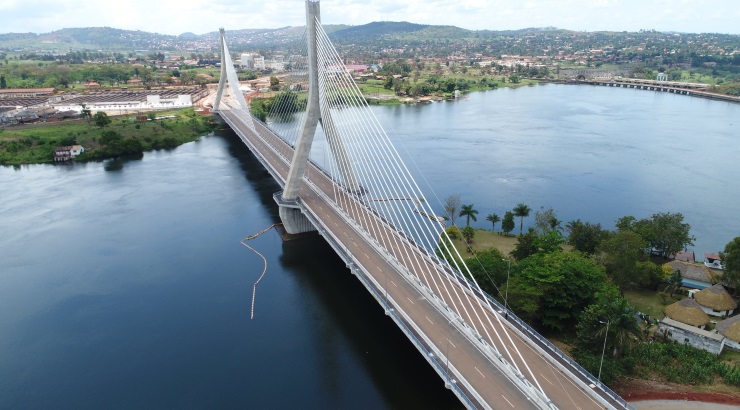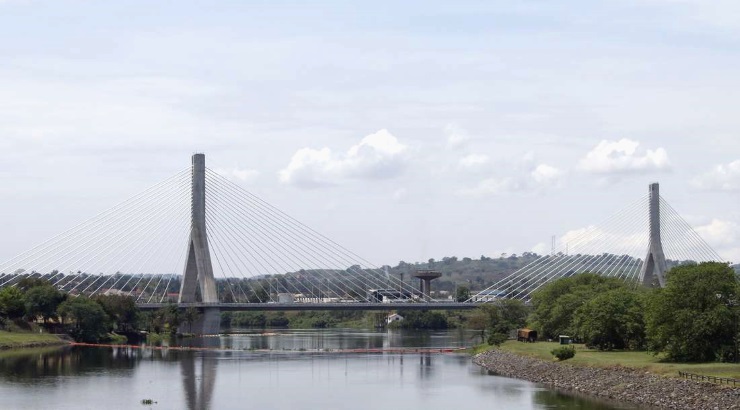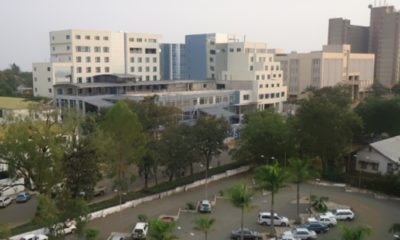Project News
Source of the Nile Bridge opens in Uganda – and it looks fabulous
The bridge has cameras and sensors that will mechanically enforce axle load limits.

Japan-funded Source of the Nile Bridge, flaunted as Africa’s fifth-largest bridge, has opened in Jinja, 80 kilometres east of Kampala, easing traffic flow in the busy Ugandan commercial centre.
The bridge, which officially opened on October 17, offers a safer crossing to substitute the crumbling Nalubaale Bridge at Owen Falls Dam, 500 metres north – which was built 64 years ago.
The Source of the Nile Bridge spans the Victoria Nile and is fitted with eight surveillance cameras and sensors that will mechanically enforce axle load limits.
Vehicles will be weighed as they traverse the bridge and if overloaded, the sensors will automatically trigger the camera to photograph the number plate of the vehicle and transmit the information to the Ministry of Works and Transport’s central information system for action.
“This bridge will deliver traffic and improve cargo movement 16 times faster than the old bridge,” said Uganda National Roads Authority board chairman Fred Omach.
The cable-stayed bridge– a dual carriageway, measuring 525 metres long and 22.9 metres wide – is the second of its kind in East Africa after the 680-metre-long Kigamboni Bridge, which opened in Tanzania two weeks ago.
The bridge was built by Japanese contractor Zenitaka Corporation in partnership with South Korean Hyundai Engineering and Construction Company at a cost of $125 million.
The Japan International Co-operation Agency (Jica) met 80 percent of the project’s cost in the form of a US$100 million concessional loan at an annual interest rate of 0.01 per cent, repayable in 10 years but extendable up to 40 years.
“This is a milestone in upgrading the most important trade and transport corridor, and will relieve traffic on the Nalubaale Bridge,” said Monica Azuba, Uganda’s Minister for Works and Transport.

The Source of the Nile Bridge is fitted with laser lighting to illuminate the structure at night – a safety feature that makes it a tourist attraction.
The signature beauty of the facility is 72 harp-like white cables connecting the bridge deck to two 69-metre tall inverted-Y pylon towers.
The stay cables, according to Dr Hiroshi Akiyama, a Zenitaka engineer, are meant to hold and hang the girder and support both human and vehicle traffic weight.
The super-structure is protected against lightning strikes with lightning arrestors that run from the deck to each tip of the inverted-Y pylon towers.
There are 202 LED bulbs at the base of the cables, but with the meridian of the deck, that light up the 72 stay cables. Trial lighting was done last week to the bewilderment of residents. Officials, however, said that such illumination will only be done during national ceremonies.
According to Jica president in Uganda Shinichi Kitaoka, the facility was erected using Japan’s latest technology in bridge engineering and its distinctive features will benefit the entire region.
“The technology used here will inform future projects in Uganda and Africa,” Mr Kitaoka said.












